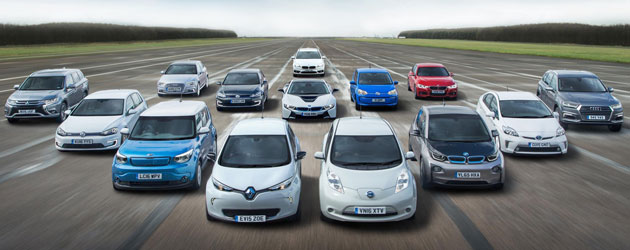The Rise of Electric Vehicles
March 1, 2018
The final death sputters of the internal combustion engine are imminent. Replacing them will be the silent hum of electric motors.
Despite advances in combustion technology, electric cars are quickly gaining in popularity. Between 2012 and 2016, the sales of electric vehicles have grown by 32 percent per year, and by 2050 electric vehicles are predicted to be over 65 percent of all light duty vehicles sold in the United States. A technology once limited to golf carts and airport shuttles is now making the world’s biggest automotive manufacturers scramble to stay relevant in the upcoming electric car boom.
However, this isn’t the first time electric cars have roamed the roads. In fact, in 1900, during the dawn of automobiles, 28 percent of vehicles produced were powered by electricity, and around one-third of vehicles on the road in America’s major cities were electric. Electric taxis roamed city streets, and it almost seemed as if the future was electric. At the same time, however, Henry Ford was pioneering his cheap, relatively powerful, and efficient (for the time) Model T, which would quickly gain popularity with the American public. By 1920, the dream of an all-electric future was practically dead–killed by the technologically superior internal combustion engine.
This sudden loss in electric vehicle popularity can be attributed to the simple fact that technology was just not advanced enough for Americans at the time. Electric cars, while more reliable than gasoline-powered cars at the time, were slow, and the lead-acid batteries used to power them were heavy and had issues with longevity. Thomas Edison researched battery technology for over a decade, and the potassium hydroxide battery he produced was only marginally better than a comparable lead-acid battery. In addition, America was going through an oil boom at the time, and gasoline was cheap and readily available. It was no contest. The internal combustion engine vehicle was faster, stronger, and could travel longer distances than the electric car.
However, in 1997, Toyota revealed the very first Prius–a small, compact hybrid-electric sedan, which would go on to sell 19,000 units in its first year on sale in Japan. Eventually, Toyota brought the Prius to the United States, and it became a sales success, selling just over 100,000 units in the US in 2005. The need for hybrid and electric vehicles was only exacerbated by the sky-high crude oil prices of the mid 2000’s, and American manufacturers began to make hybrids and electric vehicles of their own. Amidst new government pressures to create low emissions and zero emission vehicles, General Motors released the Chevy Volt, a plug-in gasoline-hybrid electric vehicle whose internal combustion engine is only used to recharge the lithium ion battery. It was also a sales success, selling a tick over 23,000 units in 2012.
Still, very few automakers had yet to construct a pure electric vehicle that could travel long distances without the aid of a range-extending gas motor. However, in 2012, Tesla, the electric car company headed by PayPal founder and billionaire Elon Musk, released the Model S, a full-size luxury sedan that could travel 265 miles on a single charge, more than double its competition. The Model S sold very well given its near 60,000 dollar price tag, selling around 20,000 units globally in 2013.
With all these new electric cars on the road, a new question arose–how will our infrastructure accommodate thousands of new electric cars on the road? Currently, the majority of cars on the road are gas-powered, and thousands of gas stations, truck stops, and repair shops exist to support them. However, electric cars don’t require petrol, nor do they require oil and fluid changes, so an electric future would essentially require thousands of businesses to either shut down or repurpose themselves. In California, it is not difficult to find a charging station for an electric vehicle, but unless you live in a major city, the lack of public chargers might require you to limit your distance travelled per day and charge overnight at home.
Despite the challenges electric vehicles may face in the coming years, society is warming up to the idea of an all-electric future, and the economy is preparing to accommodate thousands of new electric vehicles. The internal combustion engine has had a good 150 year run, but its time to retire is near. The future is electric.



